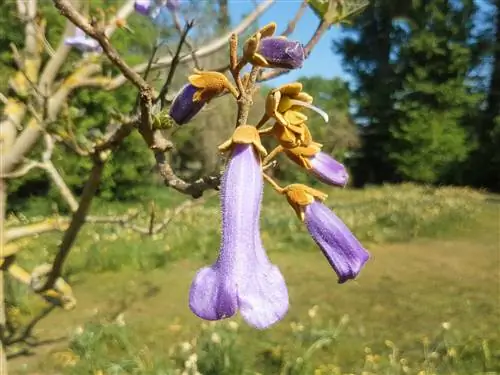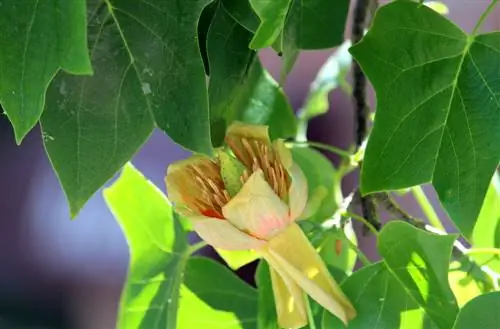- Author admin [email protected].
- Public 2023-12-16 16:46.
- Last modified 2025-01-23 11:22.
The magnificent bluebell tree is one of the uncomplicated and easy-care garden trees. But despite its robust nature, it can cause problems from time to time. You can find out exactly which ones and what is the best way to counteract them in this article.

What to do if the bluebell tree causes problems?
If the bluebell tree causes problems, you should first find out the exactcause and eliminate itWhile the lack of flowering may be due to over-fertilization, in the case of restricted growth, a lack of nutrients is often responsible.
What problems can a bluebell tree cause?
A bluebell tree can cause problems in a number of ways, particularly the following:
- not blooming
- doesn't grow
- loses leaves
In these three cases,care errors are usually the cause.
In addition, some gardeners have practical problems with their bluebell tree - for example when the roots spread under paving stones and lift the latter. In such a case, the only solution is to open the paving stones so that every root underneath can be removed. In addition, you should think aboutchanging location for the tree - even if it is “in the way” for other reasons.
Is the bluebell tree susceptible to pests and diseases?
The bluebell tree isvery resistant to pests and diseases - in that respect it is anything but a problem tree. As long as Paulownia tomentosa is well cared for, the tree, which originally comes from Asia with the elegant blue-violet flowers and impressive leaves, usually remains he althy.
Tip
Bluebell tree threatens to displace native species
Paulownia tomentosa also causes problems for a completely different reason: through human intervention, the bluebell tree has spread from its home country of China via Japan to Europe, where it is considered a potentially invasive species. This means that it is suspected of displacing native plants. Therefore it is not approved as a tree for forests and field edges.






